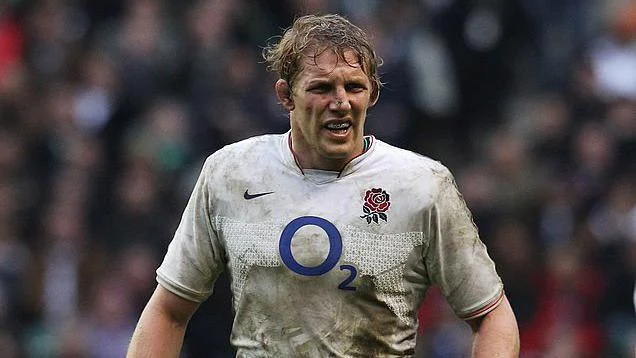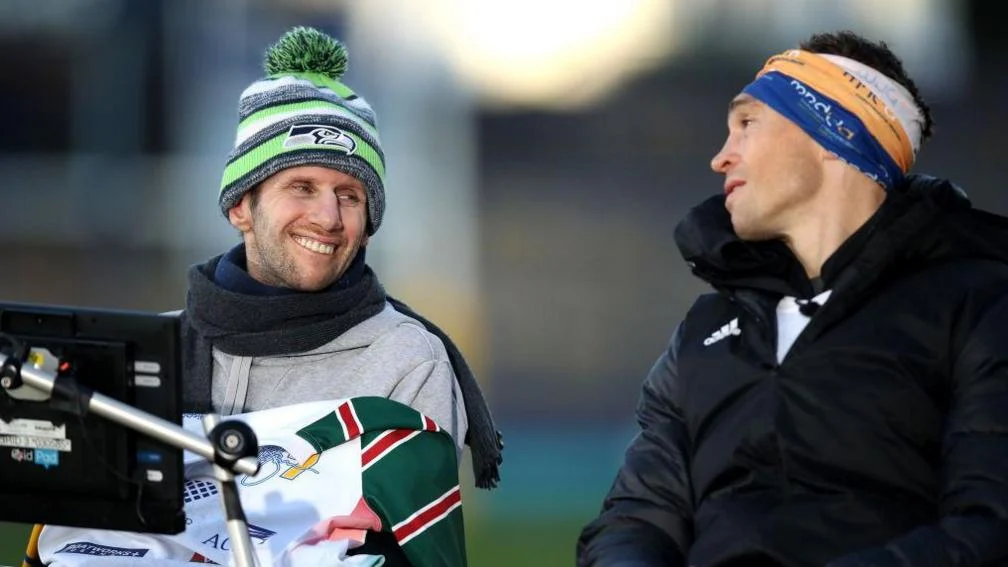What is MND and are athletes more likely to be diagnosed?
Motor neurone disease (MND) affects nerves found in the brain and spinal cord, which tell your muscles what to do.
This leads them to weaken and stiffen over time and usually affects how you walk, talk, eat and breathe.
World Cup-winning former England rugby union international Lewis Moody, 47, is the latest former athlete to be diagnosed with the disease.
It is a relatively rare condition that is most common in people over 50, but adults of any age can be affected.
A person’s lifetime risk of developing MND is one in 300.
About 5,000 adults in the UK will have the disease at any one time.
Scientists are not sure what causes MND, but it is likely to be a combination of the genes – or biological traits – you get from your parents when you are born, and other lifestyle factors.
For up to one in 10 people with MND, specific genes play a much larger role. There is usually a family history of the disease in these cases.
What are the first signs of the disease?

MND affects everyone differently.
Not everyone has the same symptoms, or experiences them in the same order.
The disease can progress at different speeds too.
Some of the most common signs are:
muscle weakness and cramps
stiff joints
problems with how you speak
issues with swallowing, eating and drinking
weakened coughing
Is there a cure?
There is no cure, but there is hope coming from treatments targeted at different forms of MND.
MND is not one disease – it is really several that culminate in the death of motor neurones or nerve cells.
A new drug called tofersen works in only one in 50 patients, however it has been shown to slow – and in some cases even reverse – some of the symptoms of MND.
It has been described as “truly remarkable” and a “real moment of hope” for the whole disease.
Although the drug has recently been approved in the European Union, it is not yet available in the UK.
There is only one drug currently licensed for the treatment of MND in the UK and approved by the NHS.
Riluzole may slow down the progression of the disease and increase survival by several months, but it does not reverse damage.
What is life expectancy for MND?
Some people can live for many years with MND, including theoretical physicist Stephen Hawking, who was diagnosed at the age of 22 and lived to 76.
But for most, the disease progresses quickly and life expectancy is just a few years.
According to the charity MND Association, the disease kills a third of people within a year and more than half within two years of diagnosis.
As the nerve cells stop working, swallowing and breathing become more challenging and many people need feeding tubes or breathing apparatus to help them stay alive.
Are athletes more likely to be diagnosed?

The exact cause has not yet been found, but elite athletes appear disproportionately affected by MND.
Two studies from 2005 and 2009 showed professional footballers have an increased risk of developing MND.
A 2022 study by the University of Glasgow involving 400 former Scotland rugby union players concluded they had an increased risk of developing the condition.
Researchers at Durham University also found rugby players who have suffered multiple concussions have biological differences that may make them more prone to developing MND.
The MND Association acknowledges there is a “correlation” between contact sports and MND. It added that while the athletes studied were more likely to develop MND, it did not show the sports directly caused the condition.
The charity also emphasises that “reported MND cases in these studies is still relatively low, and so concluding there is a definite increased risk could be misinterpreted if this is simply a cluster due to random chance”.
Moody had a distinguished rugby union career – playing an integral role at flanker and coming off the bench to help England win the 2003 World Cup in Australia.
He started for England in the 2007 World Cup final defeat before going on to captain the team at the 2011 tournament.
His diagnosis is the latest in the sport after former Scotland rugby union international Doddie Weir and ex-England rugby league star Rob Burrow.
Moody’s Leicester Tigers team-mate Ed Slater was diagnosed with MND in 2022, aged 33, following six months of testing.
Former Liverpool and Bradford City defender Stephen Darby was also diagnosed with the condition aged just 29.
David ‘Syd’ Lawrence – who was the first British-born black cricketer to represent England – died in 2025 just a year after receiving his diagnosis.
In the United States, baseball player Lou Gehrig died from the condition aged 39.
This article is the latest from BBC Sport’s Ask Me Anything team.
A version of this article was first published by BBC News in June 2024.
What is Ask Me Anything?
Ask Me Anything is a service dedicated to answering your questions.
We want to reward your time by telling you things you do not know and reminding you of things you do.
The team will find out everything you need to know and be able to call upon a network of contacts including our experts and pundits.
We will be answering your questions from the heart of the BBC Sport newsroom, and going behind the scenes at some of the world’s biggest sporting events.
Our coverage will span the BBC Sport website, app, social media and YouTube accounts, plus BBC TV and radio.
More questions answered…
What are rugby union’s rules on concussion injuries?
What are flashing mouthguards at Women’s Rugby World Cup?
Why has the Man City 115 charges case taken so long?



